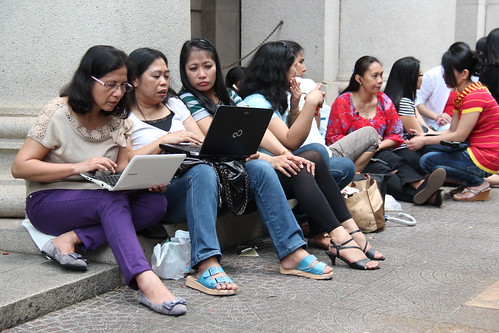May 2015
#migrantread I’m Not From Here: from architecture to people, migration around the world
Migration is most commonly associated with people: those who move by choice and those who move because they have to.
Yet, almost everything we know came from somewhere else. Architecture. Coffee. Customs. Food. Ideas. More. The topic of migration, in Australia, often dominates newspaper headlines. Issues around asylum seekers, border control and detention centres are never far from the political imagination. Migration is not, however, new. Convicts arrived in the 1700s and have been followed by waves of migrants ever since. Many Australians are proud of their ancestors who made the journey to Australia, from all over the world. This can be seen in the work of genealogists in libraries and local studies centres around the country and the increasing popularity of television programs such as Who Do You Think You Are?
The efforts of early explorers facilitated many mass migrations including Christopher Columbus, James Cook, Francis Drake and Ferdinand Magellan. Some stories of migration are very sad (such as pieces around the Leaving of Liverpool) while other stories are uplifting (such as Ahn Do’s The Happiest Refugee, Judith Kerr’s When Hitler Stole Pink Rabbit and Reaching for the Stars by José Hernández).
Migration is, of course, not just about people. Famous naturalists, such as David Attenborough, have been documenting the migration of animals for generations. Some animal migrations – birds, insects, whales – are majestic. Others, such as the importation of cane toads and rabbits to Australia have proven to be incredibly destructive while migrating plants have overtaken natural environments in numerous countries. Similarly, disease – from the common cold to the plague – has decimated communities across the globe.
Perhaps some of the most popular migrations have been around food. Followed by architectural styles, inventions as well as many customs and ideas that, today, are taken for granted (such as democracy). Even play can migrate and become global from Scrabble to Angry Birds. Today, migration occurs – as it has always done – it is just much faster as advances in transport promote the migration of goods, services and people while the Internet allows for the almost instant migration of ideas and opinions.
This month, find something you take for granted – then read, watch, play and discover where it came from. There will be a twitter discussion on 26 May starting at 8.00pm Australian Eastern Standard Time. 9.00pm New Zealand Time, 6.00pm Singapore Standard Time, 9am – 11am and 2pm – 4pm BST, 12.00 noon Central European Time. Note: this is a staggered start to the discussion.
Use the tags #migrantread and #rwpchat as you discuss the reading, watching playing that is your experience of #migrantread, so others can join in the conversation too.

Trackbacks